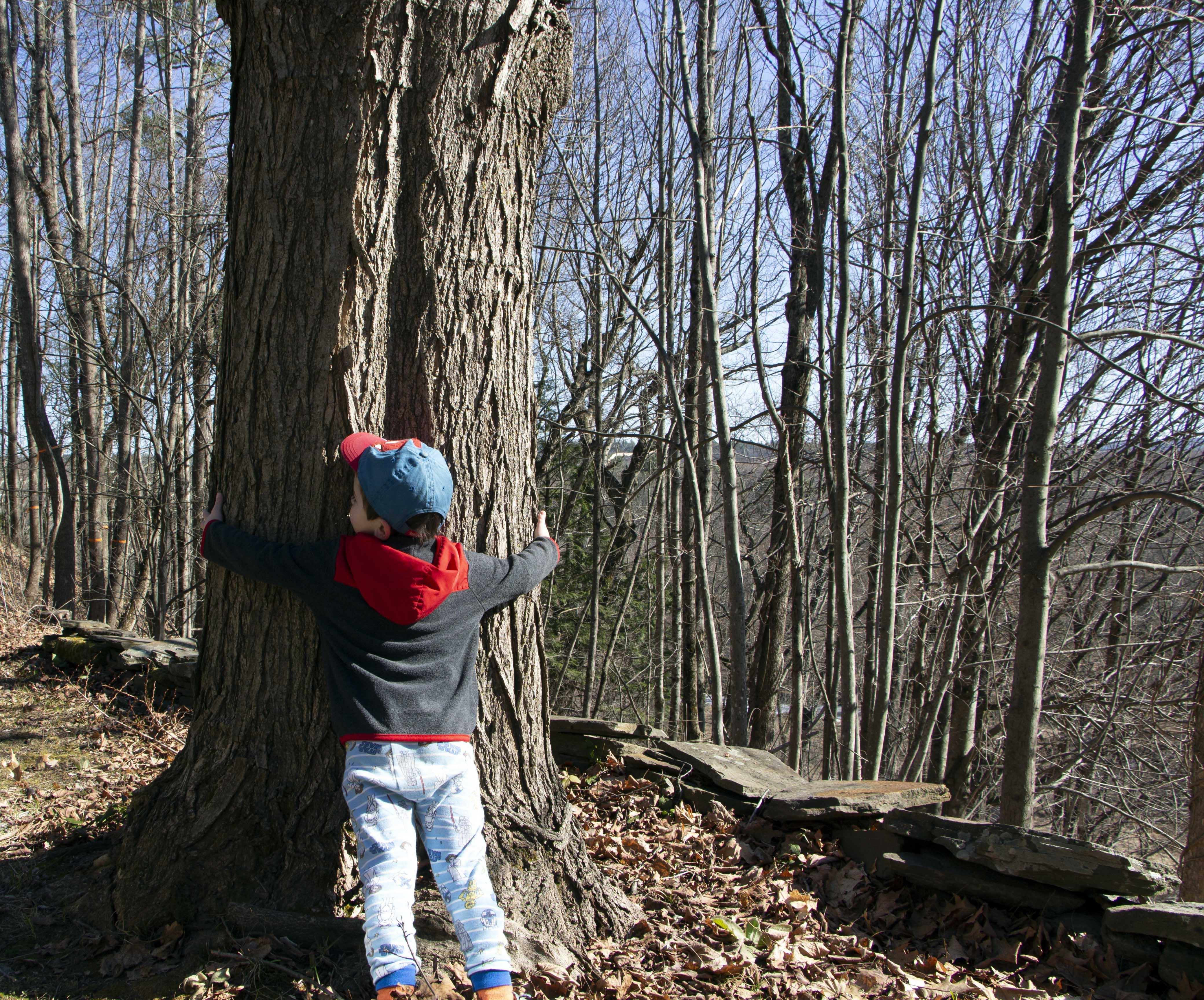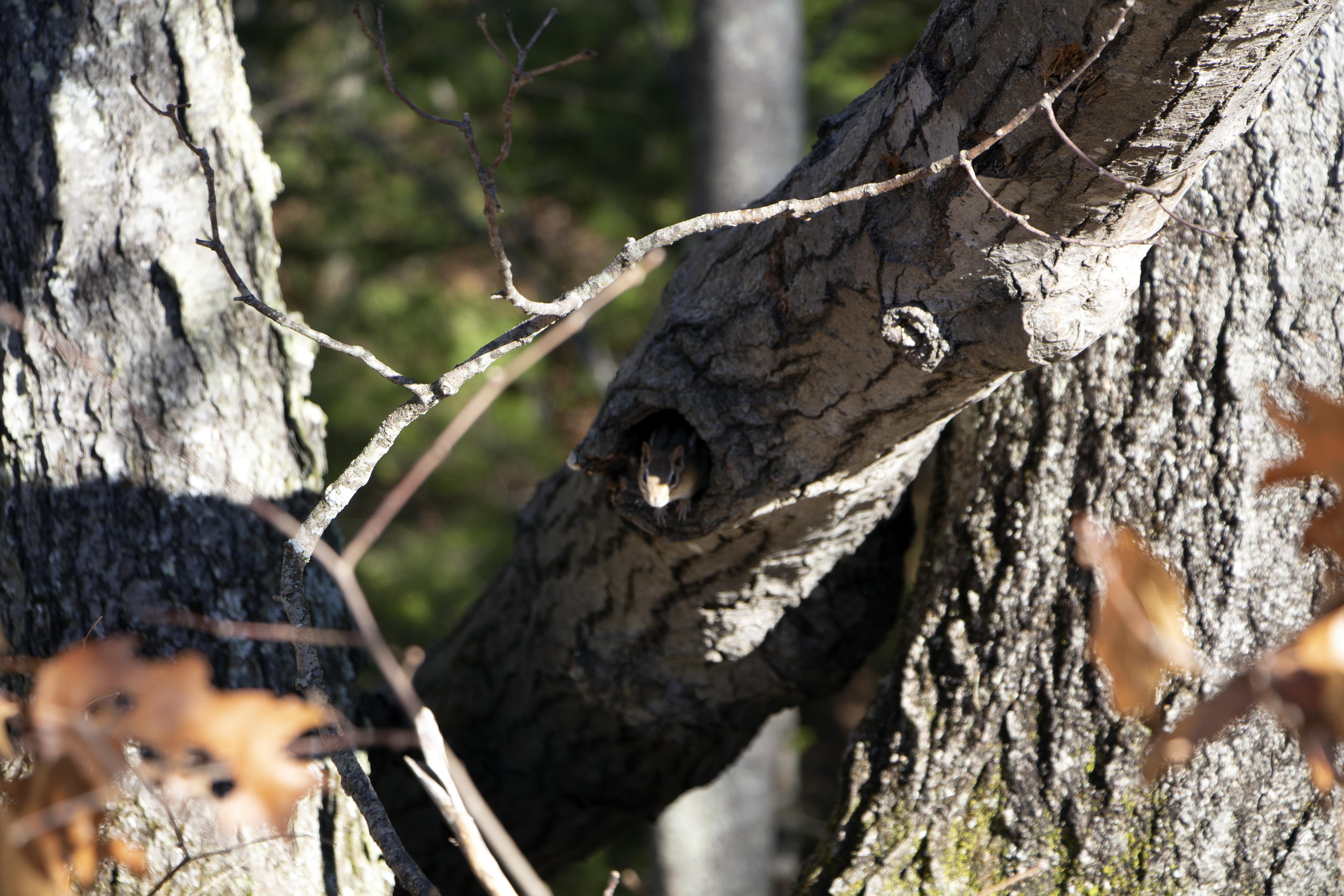- Tags:
- Recreation,
- Education

The youngest members of the Berry family experimented with hugging a tree to create a calm feelings last weekend in Concord.
My favorite season was canceled. Well, not really. It’s been a bountiful sugar season in New Hampshire, and there’s still work going on as sap is boiled down to syrup.
But the state’s annual March Maple Weekend was canceled due to the ongoing COVID-19 global pandemic. It was a reasonable response amid a devastating month for humanity.
It is interesting, however, how life always finds a way — even in the darkness — and maybe that’s why we set our human lives to nature’s clock.
When I was growing up in Alaska, March did not mean the start of mud season. It was practically mid-winter, and only a little warmer than the time around the winter solstice when temperatures bottomed out at 40 below zero for weeks at a time. March — my birth month — meant watching dogsled races on the frozen banks by the river and the annual ice carving festival.
My dad would make elaborate sledding trails through the woods in front of my house for my birthday parties, and it was assumed that you’d bring your snowsuit to spend the afternoon careening down the hill. I never understood what the March 21 equinox signified because there were few signs of spring until the end of April.
In New Hampshire, as I’ve learned since moving here 15 years ago, March unfolds as a different story. Here, what we Alaskans called break-up season is known as mud season. I look forward to the purple crocuses popping up out of the snow — or, in some years, from underneath brittle leaves — just as I complete another year around the sun.
Now that I’m raising New Hampshire-born children, I’m trying to instill my love of the outdoors in them — including an affinity for all things maple. Each year, our family drives into the countryside to visit a friend’s sugarhouse. We eat our weight in maple cotton candy and experiment with pulling maple candy from fresh snow. We’ve also taken a very muddy tractor ride to the Maple Museum at The Rocks in Bethlehem.
This year, we’re planning to spend the spring closer to home to protect ourselves from the coronavirus and help save the lives of those we don’t know, too. My 4½-year-old twins aren’t old enough to understand what’s going on or why their childcare center is closed. With the world in upheaval, I’ve already come to find that children light the way.
They remind me to notice the wild world outside — even if it’s only as far as our backyard. And, as we try to keep some aspects of our lives consistent, for their sake and ours, our connection to the outdoors is a non-negotiable.
Hugging a tree
Last weekend, we tried an easy experiment outside and hugged a tree. It sounds silly, but science says that literally putting your arms around a tree — any tree —increases your levels of oxytocin, which can instill a sense of calm. It’s also a pretty easy ask for kids to try. (A hat tip here to my colleague Ryan Smith for the suggestion.)
First, we measured how far our arms could go around a tree. Then, we took a photo of the tree bark to upload into the iNaturalist app. iNaturalist, a joint initiative of the California Academy of Sciences and the National Geographic Society, allows you to photograph wildlife and wild species you observe and quickly crowdsource identification if you provide your location. Plus, you’re contributing to biodiversity science!
The app identified our tree as a shagbark hickory (Carya ovata). However, upon further review by naturalist Dave Anderson, it could also be a sugar maple. We should have taken a few more photos of the branches and leaves to help with the identification.
We also looked for signs of spring — emerging buds on branches and green stems poking up from thawing earth — and listened for birds and animals who might be returning to the woods.
Connect with nature

Luckily, whether you’re self-isolating inside, keeping to your neighborhood or you have easy access to forests and fields, it’s easier than ever to grow your connections to the natural world. The Society for the Protection of New Hampshire Forests and many other local nonprofits are offering a myriad of digital and virtual educational resources for all ages.
Here are a few that might be of interest:
- Our (Out)doors are Open: The Forest Society has pulled together a number of digital links and tools on our website. If you’re headed outside, you can use our online reservation guide to find a property that is open to visitors. Fifty-eight of the properties host marked trails. We encourage you to visit a local (to you), lowertrafficked reservation to ensure you can stay at least 6 feet apart from other visitors to the trails. If you’re staying inside, the Forest Society will be hosting weekday “Lunchtime LIVE” broadcasts on Facebook featuring educational talks on wildlife, forestry and other topics.
- Our friends at New Hampshire Audubon recently hosted a Facebook live Q&A with their education coordinator and an animal ambassador, the Barn Owl. The presentation kept our whole family entertained and we learned why owls have so much mobility in their necks compared to humans. Follow your favorite environmental nonprofit organizations on social media to see the latest new content.
- The New Hampshire Agriculture in the Classroom organization runs a special program that brings classes of students to farms. But, they also provide curriculum to schools and families, from maple recipes for pre-schoolers to a lesson on sap value calculation for middle-schoolers.
- Wildlife cameras: Peep in on live video of a peregrine falcon nest on top of the Brady Sullivan building in Manchester or watch other broadcasts from around the country.
- Use the iNaturalist app to participate in community projects, too. For example, the Harris Center for Conservation Education is hosting a virtual “BioBlitz” on April 5 where volunteers help document the biodiversity of a particular town or region through the app.
As for my family, we’re busy planning a few hikes and camping trips for the summer, reminding ourselves that better times will be ahead. I’m also using our time indoors to find a few treasured, tattered paperbacks that have traveled with me from Alaska to New Hampshire. They bring me comfort each time I return to the pages.
One of my favorites is “Pilgrim at Tinker Creek” by Annie Dillard, who reminds us how to see by sharing her everlasting reflections on the natural world she finds outside her door.
She wrote: “It has always been a happy thought to me that the creek runs on all night, new every minute, whether I wish it or know it or care, as a closed book on a shelf continues to whisper to itself its own inexhaustible tale.”
Anna Berry is the digital outreach manager for The Society for the Protection of New Hampshire Forests.
